Dinitolmide
Synonym(s):2-Methyl-3,5-dinitrobenzamide;3,5-Dinitro-o-toluamide
- CAS NO.:148-01-6
- Empirical Formula: C8H7N3O5
- Molecular Weight: 225.16
- MDL number: MFCD00007985
- EINECS: 205-706-4
- SAFETY DATA SHEET (SDS)
- Update Date: 2024-11-19 23:02:33
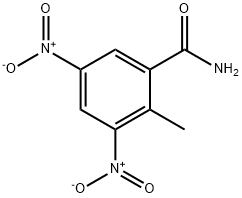
What is Dinitolmide?
Description
Dinitolmide is a yellowish crystalline substance. Molecular weight= 225.18; Freezing/Meltingpoint = 177.2℃. Very slightly soluble in water.
Chemical properties
Yellowish solid. Very slightly soluble in water; soluble in acetone, acetonitrile, dioxane, and dimethylformamide.
The Uses of Dinitolmide
Dinitolmide may be used as an analytical reference standard for the quantification of the analyte in animal tissues poultry, livestock, and aquatic tissues using chromatography techniques.
The Uses of Dinitolmide
A fodder additive for poultry used to prevent coccidiosis infections. Antiprotozoan drug.
The Uses of Dinitolmide
antiprotozoal
Definition
ChEBI: Dinitolmide is a dinitrotoluene.
General Description
Yellowish, crystalline solid. Mp: 177°C. Very slightly soluble in water. Soluble in acetone, acetonitrile, and dimethylformamide. Used as an anti-parasite drug for poultry. Store in a cool, ventilated place, away from acute fire hazards and easily oxidized materials.
Reactivity Profile
Dinitolmide reacts as an oxidizing agent. Has been known on at least one occasion to explode destructively. Incompatible with easily oxidized materials. Emits toxic NOx fumes if heated to decomposition.
Hazard
Liver damage
Safety Profile
Poison by intravenous route. Moderately toxic by ingestion. Mutation data reported. A strong exothermic reaction above 248OC has caused industrial explosions. When heated to decomposition it emits toxic fumes of NOx. See also NITRO COMPOUNDS of AROMATIC HYDROCARBONS.
Potential Exposure
AgriculturalChemical; Mutagen. Those involved in the manufacture,formulation, and application of this veterinary coccidiostat,an antiparasite medicine used in poultry.
First aid
If this chemical gets into the eyes, remove anycontact lenses at once and irrigate immediately for at least15 min, occasionally lifting upper and lower lids. Seek medical attention immediately. If this chemical contacts theskin, remove contaminated clothing and wash immediatelywith soap and water. Seek medical attention immediately. Ifthis chemical has been inhaled, remove from exposure,begin rescue breathing (using universal precautions, including resuscitation mask) if breathing has stopped and CPR ifheart action has stopped. Transfer promptly to a medicalfacility. When this chemical has been swallowed, get medical attention. Give large quantities of water and inducevomiting. Do not make an unconscious person vomit.Note to physician: Treat for methemoglobinemia.Spectrophotometry may be required for precise determination of levels of methemoglobinemia in urine
storage
Color Code—Blue: Health Hazard/Poison: Storein a secure poison location. Prior to working with dinitolmide you should be trained on its proper handling and storage. Store in tightly closed containers in a cool, wellventilated area away from alkalies and heat.
Incompatibilities
A weak oxidizing agent, but hightemperatures and pressures may cause violent reactions.Heat can cause a violent exothermic reaction above248℃. Contact with alkalies may form explosive metalsalts.
Properties of Dinitolmide
| Melting point: | 170-180 °C (lit.) |
| Boiling point: | 366.66°C (rough estimate) |
| Density | 1.5406 (rough estimate) |
| refractive index | 1.7400 (estimate) |
| Flash point: | 2 °C |
| storage temp. | 2-8°C |
| solubility | Chloroform (Slightly), DMSO (Slightly), Methanol (Slightly) |
| form | Solid |
| pka | 13.74±0.50(Predicted) |
| color | Pale Beige to Light Beige |
| Merck | 13,3297 |
| CAS DataBase Reference | 148-01-6(CAS DataBase Reference) |
| EPA Substance Registry System | Zoalene (148-01-6) |
Safety information for Dinitolmide
| Signal word | Warning |
| Pictogram(s) |
 Exclamation Mark Irritant GHS07 |
| GHS Hazard Statements |
H302:Acute toxicity,oral |
| Precautionary Statement Codes |
P264:Wash hands thoroughly after handling. P264:Wash skin thouroughly after handling. P270:Do not eat, drink or smoke when using this product. P301+P312:IF SWALLOWED: call a POISON CENTER or doctor/physician IF you feel unwell. P501:Dispose of contents/container to..… |
Computed Descriptors for Dinitolmide
| InChIKey | ZEFNOZRLAWVAQF-UHFFFAOYSA-N |
Abamectin manufacturer
New Products
4-AMINO-TETRAHYDRO-PYRAN-4-CARBOXYLIC ACID HCL 4-(Dimethylamino)tetrahydro-2H-pyran-4-carbonitrile 4-Aminotetrahydropyran-4-carbonitrile Hydrochloride (R)-3-Aminobutanenitrile Hydrochloride 3-((Dimethylamino)methyl)-5-methylhexan-2-one oxalate 1,4-Dioxa-8-azaspiro[4.5]decane 5-Bromo-2-nitropyridine Nimesulide BP Aceclofenac IP/BP/EP Diclofenac Sodium IP/BP/EP/USP Mefenamic Acid IP/BP/EP/USP Ornidazole IP Diclofenac Potassium THOMAIND PAPER PH 2.0 TO 4.5 1 BOX BUFFER CAPSULE PH 9.2 - 10 CAP SODIUM CHLORIDE 0.1N CVS ALLOXAN MONOHYDRATE 98% PLATINUM 0.5% ON 3 MM ALUMINA PELLETS (TYPE 73) LITHIUM AAS SOLUTION 2-Bromo-1-(bromomethyl)-3-chloro-5-nitrobenzene 2-Bromo-3-nitroaniline N-(3-Hydroxypropyl)-N-methylacetamide 3-Bromo-6-chloropyridazine 4-ethyl-3-nitrobenzoic acidRelated products of tetrahydrofuran

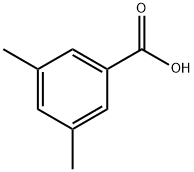

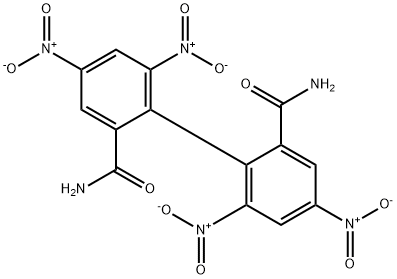

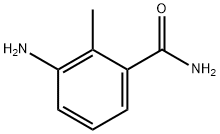
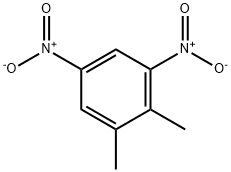
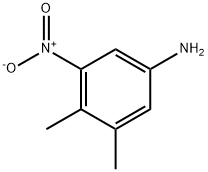
You may like
-
 Dinitolmide 99%View Details
Dinitolmide 99%View Details -
 3,5-Dinitro-o-toluamide CAS 148-01-6View Details
3,5-Dinitro-o-toluamide CAS 148-01-6View Details
148-01-6 -
 1823368-42-8 98%View Details
1823368-42-8 98%View Details
1823368-42-8 -
 2-(3-(tert-butyl)phenoxy)-2-methylpropanoic acid 1307449-08-6 98%View Details
2-(3-(tert-butyl)phenoxy)-2-methylpropanoic acid 1307449-08-6 98%View Details
1307449-08-6 -
 Ethyl 3-(furan-2-yl)-3-hydroxypropanoate 25408-95-1 98%View Details
Ethyl 3-(furan-2-yl)-3-hydroxypropanoate 25408-95-1 98%View Details
25408-95-1 -
 2-Chloro-5-fluoro-1-methoxy-3-methylbenzene 98%View Details
2-Chloro-5-fluoro-1-methoxy-3-methylbenzene 98%View Details
1805639-70-6 -
 1784294-80-9 98%View Details
1784294-80-9 98%View Details
1784294-80-9 -
 Lithium ClavulanateView Details
Lithium ClavulanateView Details
61177-44-4